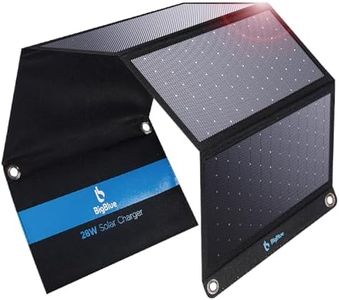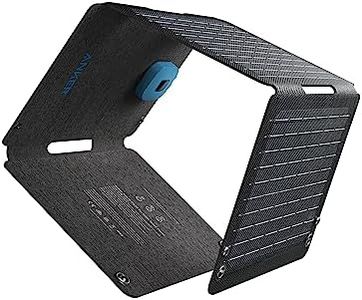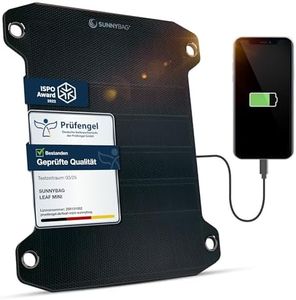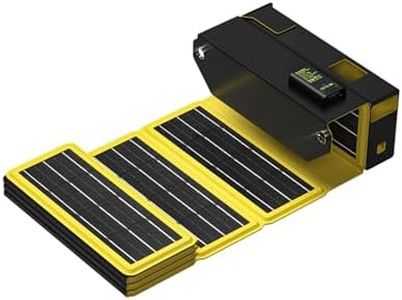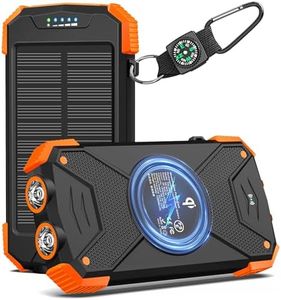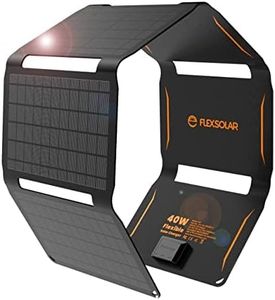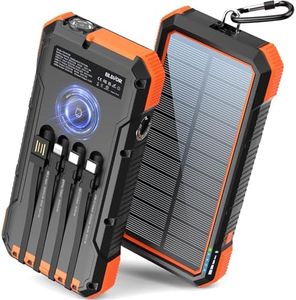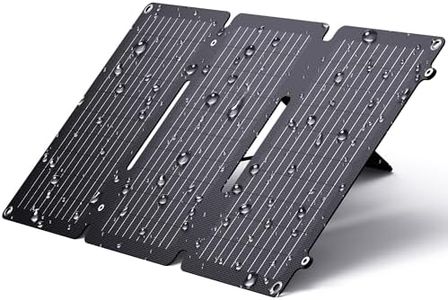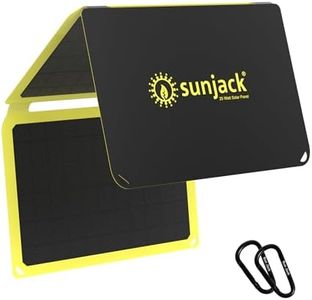We Use CookiesWe use cookies to enhance the security, performance,
functionality and for analytical and promotional activities. By continuing to browse this site you
are agreeing to our privacy policy
10 Best Solar Iphone Chargers
From leading brands and best sellers available on the web.Buying Guide for the Best Solar Iphone Chargers
Choosing a solar charger for your iPhone is all about finding the right balance between portability, charging speed, and reliability. Solar chargers are fantastic when you’re on the move, camping, hiking, or simply want an eco-friendly backup power source. The best approach is to first think about how and where you’ll use your charger, whether you’ll be outdoors for extended periods or just need an emergency backup. Then, pay close attention to certain key specifications to ensure you pick a charger that matches your needs and expectations.Solar Panel Output (Wattage)Solar panel output, measured in watts, indicates how much energy the charger can produce in optimal sunlight. The higher the wattage, the faster your device can charge. Chargers are typically broken into low (under 10W), medium (10-20W), and high output (20W+). Low-output panels are more compact but slower; they’re suited for emergencies or light use. Medium-output panels strike a balance—good for regular phone charging outdoors. High-output panels are larger but much faster and can sometimes charge multiple devices. If you’ll be outside for long stretches or need to charge faster, aim for higher wattage; but for simple emergency use, a smaller panel is usually enough.
Battery Capacity (mAh)Some solar chargers come with an integrated battery, measured in milliamp-hours (mAh). This shows how much power it can store for later use. Small capacities (under 5,000 mAh) can top up a phone once; medium (5,000-15,000 mAh) handle multiple charges; large capacities (15,000 mAh+) are like power banks for several devices or days of use. If you need to charge your iPhone multiple times before recharging the charger itself—useful for camping or traveling—choose a higher capacity. For single-use or emergencies, a smaller battery is lighter and more compact.
Portability and WeightThe portability refers to the size, weight, and design of the solar charger. Lightweight, foldable models are easy to carry in a backpack, while bulkier chargers may be more powerful but less convenient to carry around. If you’re hiking or on the move, portability should be a top priority; for car camping or stationary use, a larger charger may be fine.
Output Ports (Type and Number)This specification tells you how many devices you can charge at once and the kind of plugs available (USB-A, USB-C, etc.). Some solar chargers offer just one output, others provide multiple ports for several devices. If you often travel with friends or have multiple gadgets, several ports can be a big help. Make sure there’s at least one port matching your iPhone’s charging cable type (usually USB-A or USB-C).
Weather Resistance (IP Rating)Weather resistance is often indicated by an IP rating (such as IPX4 or IP65) and shows how well the charger can handle dust or splashes. Chargers with higher ratings are better suited for outdoor use, especially if you’ll be near water or in dusty environments. If you only plan to use the charger occasionally outdoors or mostly indoors, this may not matter much; for hiking, backpacking, or beach trips, a higher rating offers peace of mind.
Charging Speed (Amperage)Charging speed is given in amps (A). Higher amps mean faster charging. Solar chargers range from slow trickle charge (under 1A) to faster charging (2A or more). Modern iPhones can handle 2A for reasonably fast charging. If fast charging is important to you, look for higher amperage; if you’re patient or just need a backup trickle, lower speeds are acceptable.

